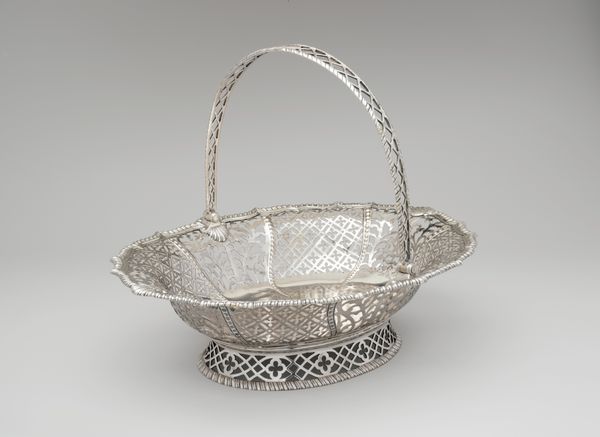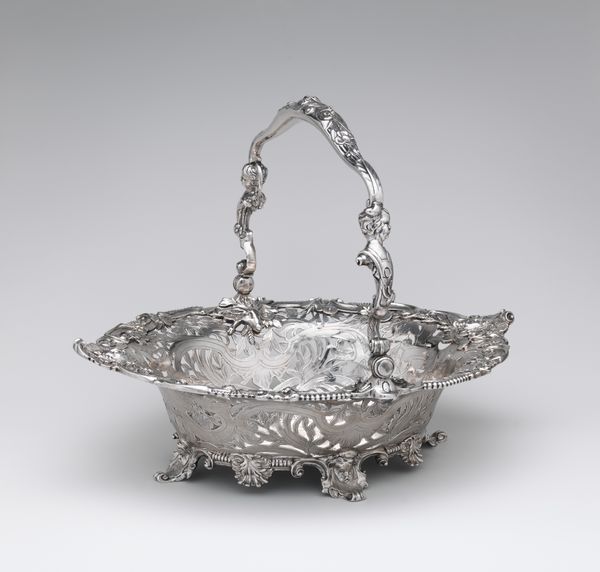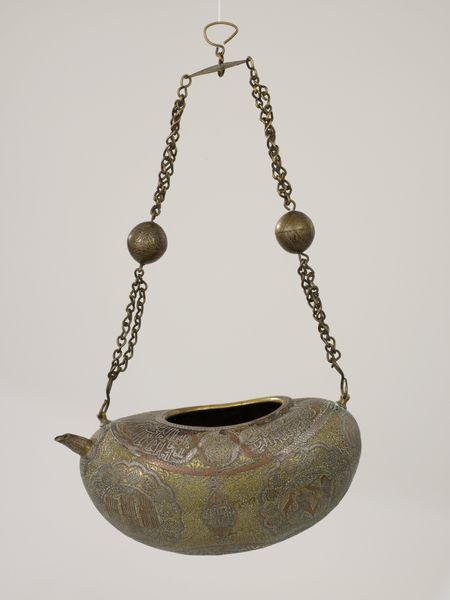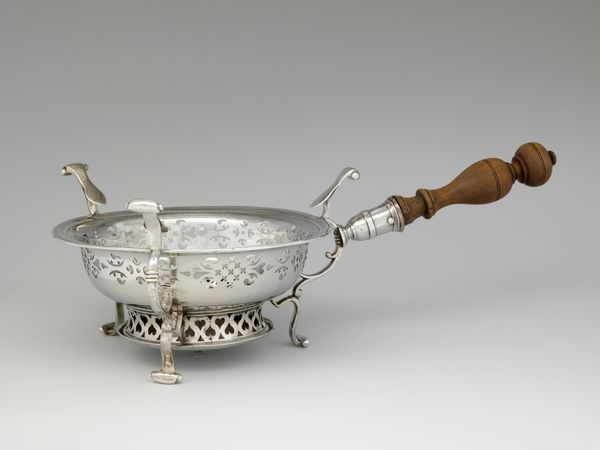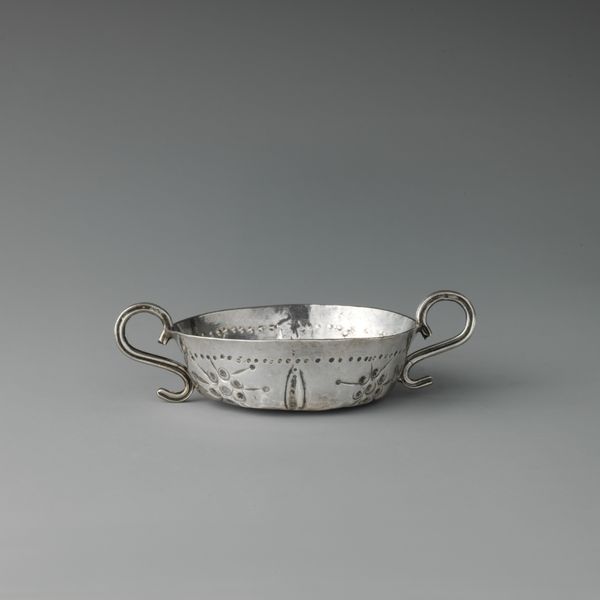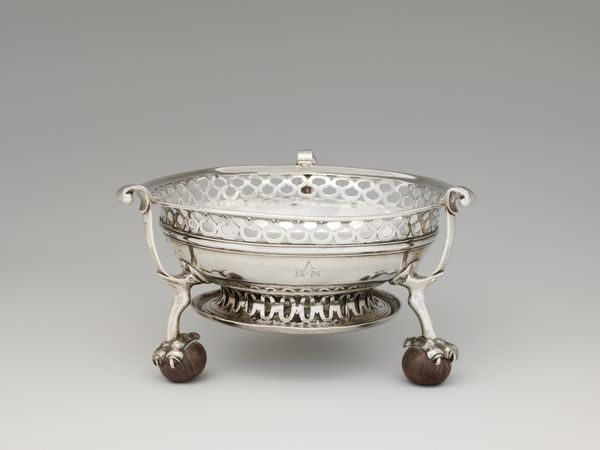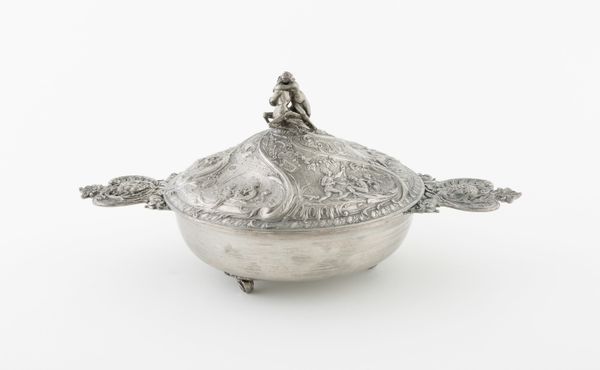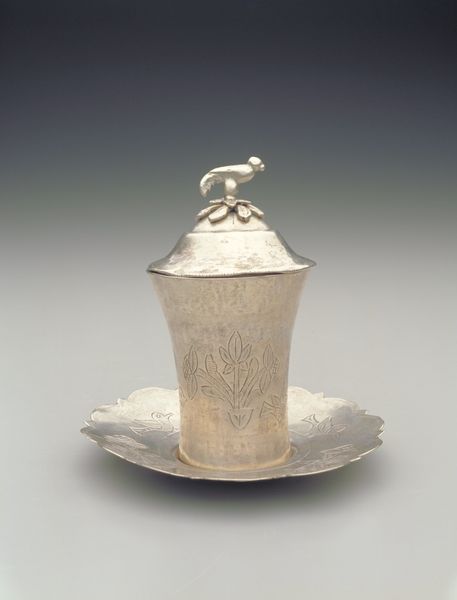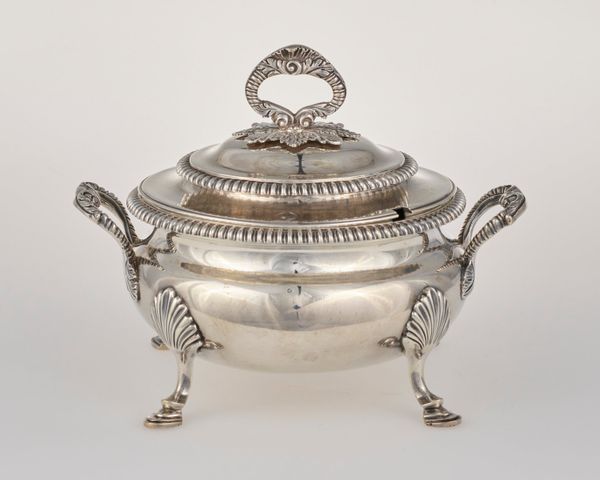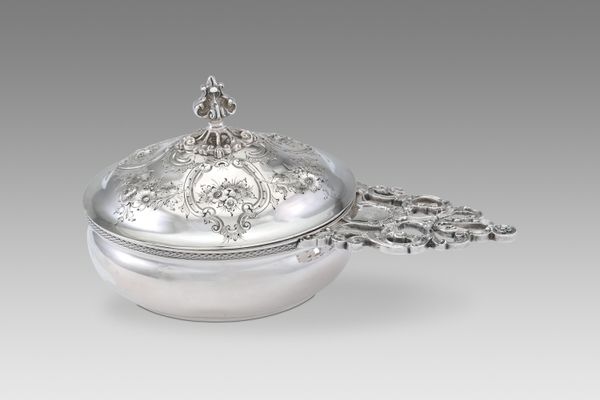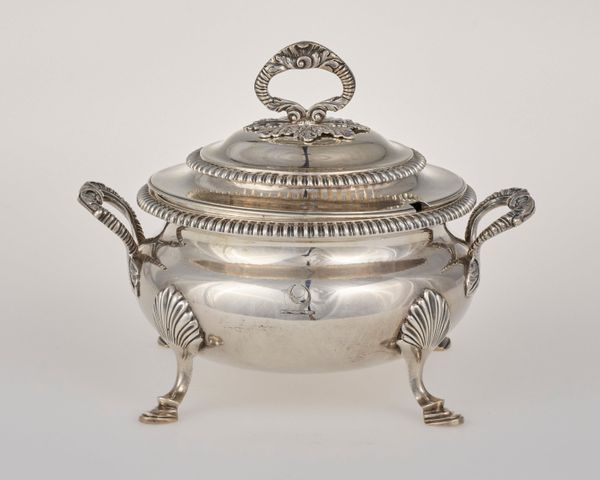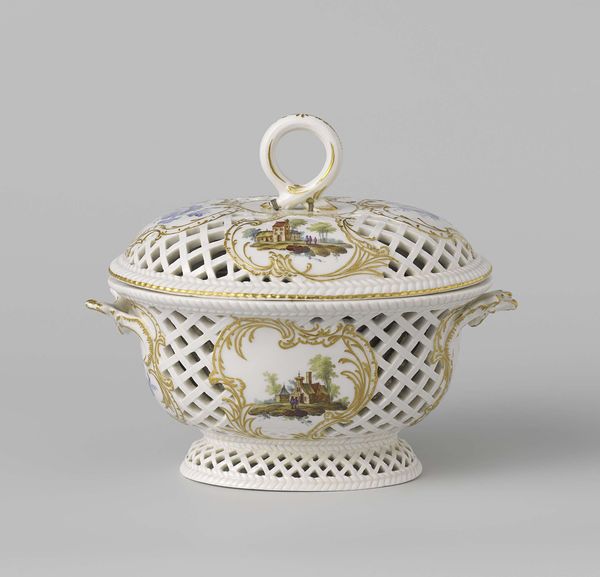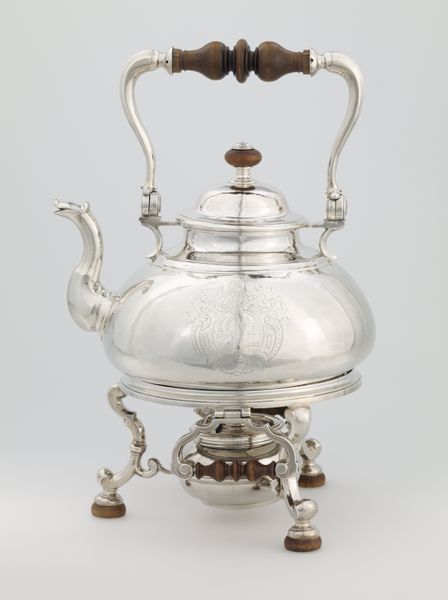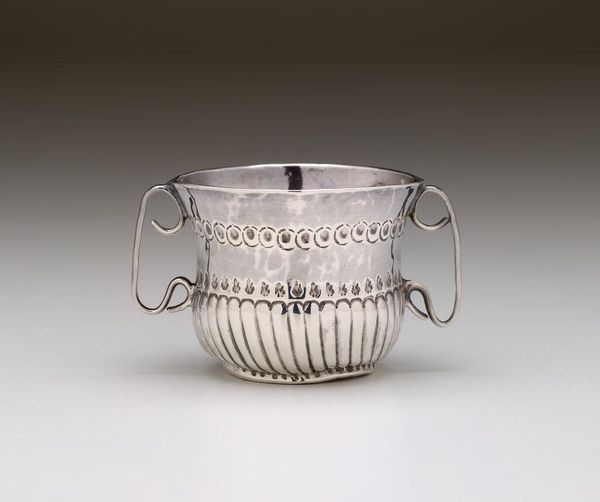
carving, silver, metal
#
carving
#
silver
#
metal
#
11_renaissance
Dimensions: height 11.0 cm, height 21.1 cm, width 23.5 cm, width 21.0 cm, depth 20.0 cm, weight 741 gr
Copyright: Rijks Museum: Open Domain
This basin was crafted anonymously, using techniques of metalworking to transform silver into a vessel of notable intricacy. The surface is covered in fine, punched indentations. This indicates that the basin wasn't cast in a mold, but patiently hammered and shaped by hand. The handle, too, shows evidence of detailed work, with its plaited texture and decorative joints. The piece’s overall aesthetic suggests a synthesis of artisanal skill and perhaps, access to specialized tools. Consider the labour involved in creating this object. The repetitive nature of the punching would have demanded considerable time and focus. This speaks to a culture where craft skills were highly valued, and the time required for detailed work was not a barrier. Ultimately, this basin is more than just a container. It is a testament to the artist's skill, and to the cultural values embedded in its making. By appreciating the materials and the making process, we gain a deeper understanding of its value.
Comments
rijksmuseum about 2 years ago
⋮
In 1535, Emperor Charles V defeated the Turks at Tunis. One of his officers, Count Maximilian of Buren, seized this basin as booty. As the inscription on the object shows, he then gave it to the town of Grave on 26 December 1536. Earlier the Turks had themselves looted the basin in Naples.
Join the conversation
Join millions of artists and users on Artera today and experience the ultimate creative platform.
